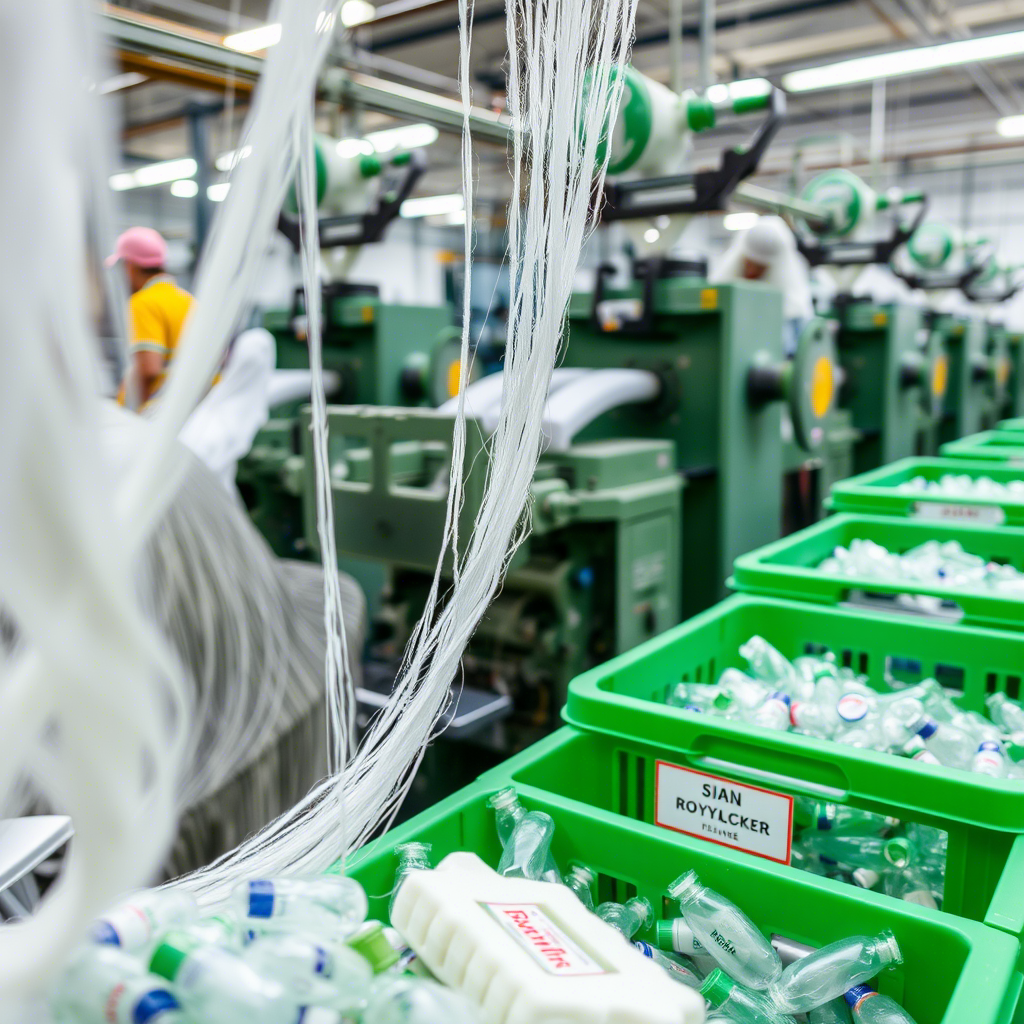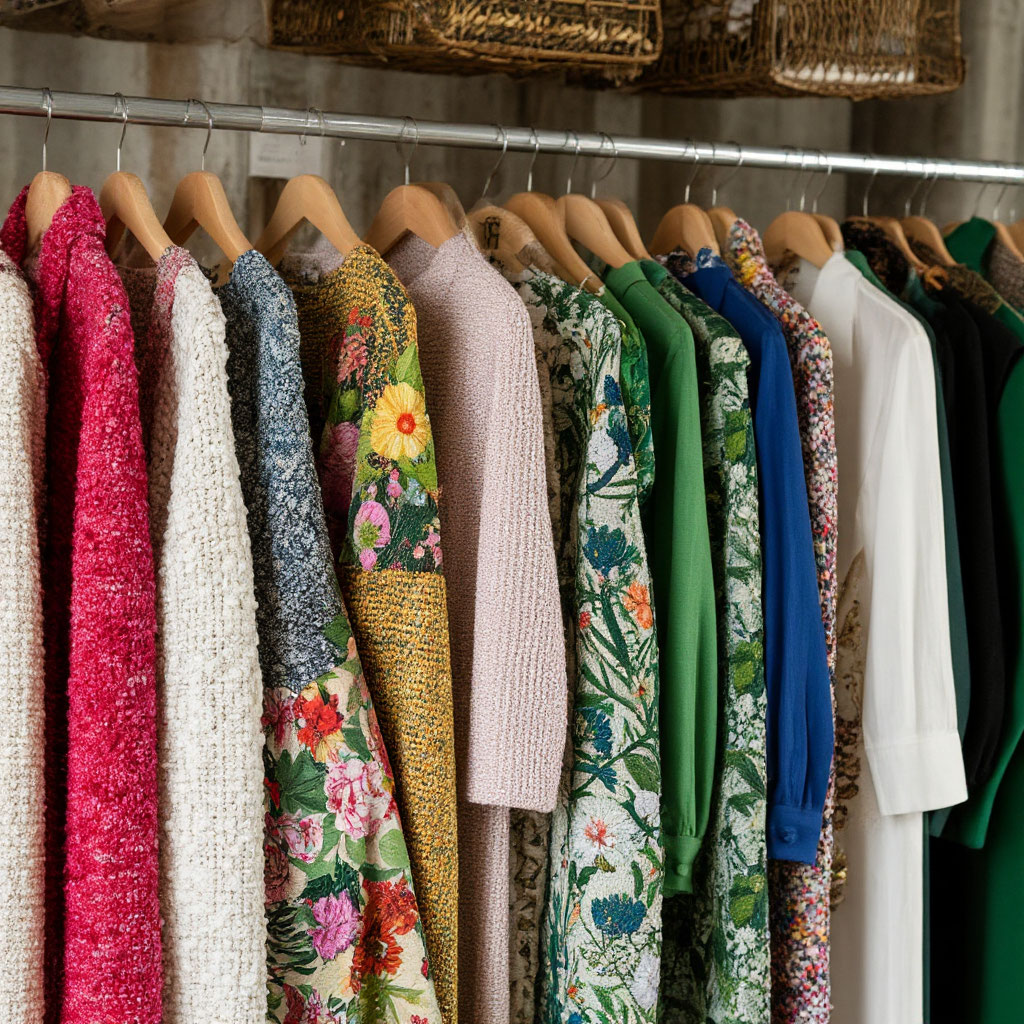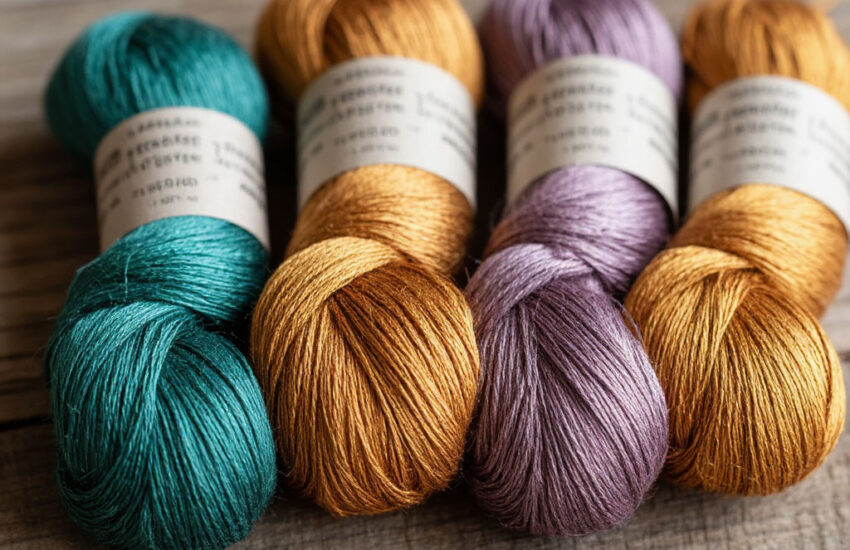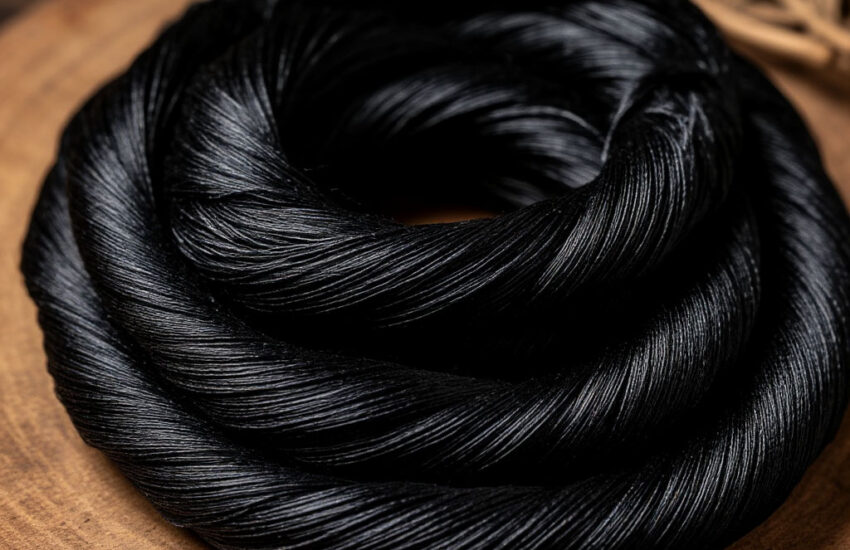Recycled Fibers: Turning Plastic Bottles and Old Clothes into New Textiles
Contents
- 0.1 From Trash to Textiles: How Recycled Fibers Are Made
- 0.2 The Environmental Impact of Recycled Polyester
- 0.3 Best Clothing Brands Using Recycled Materials
- 0.4 DIY Upcycling: Transforming Old Clothes into New Creations
- 1 FAQ
- 1.0.0.1 Is recycled polyester safe to wear every day?
- 1.0.0.2 Do recycled polyester clothes shed more microplastics than regular polyester?
- 1.0.0.3 Can I toss old clothes in curbside recycling with bottles and paper?
- 1.0.0.4 How many plastic bottles make one T-shirt?
- 1.0.0.5 Are clothes made from recycled fibers as durable as new materials?
Did you know your favorite hoodie used to be a plastic bottle, and those stylish jeans were once old curtains? Welcome to the world of recycled fabric fibers—where fashion isn’t just a trend but a real environmental revolution!
Every year, millions of tons of clothing end up in landfills, while plastic floods our oceans. But now we have a solution—sustainable fashion materials made from recycled resources! Want to learn how recycled polyester is made and why it’s cooler than conventional fabric? How upcycled clothing benefits not just the planet but also your style? And which brands are already crafting awesome pieces from waste?
Ready to be shocked, inspired, and armed with practical tips? Let’s go—because eco-conscious textile production isn’t just words, it’s the future of fashion! By the end of this article, you’ll be able to download a checklist — a clear guide to transforming waste into stylish, sustainable textiles.

From Trash to Textiles: How Recycled Fibers Are Made
The transformation of waste into recycled fabric fibers represents a breakthrough in eco-conscious textile production. Understanding how recycled polyester is made reveals why these sustainable fashion materials are transforming the industry. The process begins with collecting PET plastic bottles that would otherwise pollute ecosystems – the foundation of upcycled clothing benefits.
For plastic-based recycled fabric fibers, bottles undergo rigorous sorting by color before being crushed into flakes. These flakes transform through an extrusion process that demonstrates how recycled polyester is made at scale. Remarkably, this method consumes 59% less energy than virgin polyester production while creating identical sustainable fashion materials for clothing manufacturers.
Textile recycling presents greater complexity but offers superior upcycled clothing benefits. Mechanical recycling shreds garments into shorter recycled fabric fibers, while chemical recycling breaks fabrics down to molecular level – a revolutionary approach in eco-conscious textile production. Emerging enzymatic methods show particular promise for creating premium sustainable fashion materials from blended fabrics.
The advantages of these recycled fabric fibers are quantifiable:
- 32% reduction in CO2 emissions versus virgin materials
- 62,000 liters of water saved per ton of fabric
- Diverting millions of plastic bottles from oceans annually
Modern facilities now employ AI-powered sorting to optimize eco-conscious textile production, creating recycled fabric fibers that meet exacting quality standards. These sustainable fashion materials maintain all desirable properties – durability, moisture management, and dye affinity – while delivering upcycled clothing benefits that resonate with environmentally-conscious consumers.

The Environmental Impact of Recycled Polyester
The shift to recycled fabric fibers represents perhaps the most significant advancement in eco-conscious textile production. When examining how recycled polyester is made, the environmental advantages become undeniable compared to conventional methods.
Life cycle analyses confirm that sustainable fashion materials using recycled content generate 32% fewer CO2 emissions. This reduction stems primarily from bypassing petroleum extraction – the most energy-intensive phase of how recycled polyester is made conventionally. For context, polyester constitutes 52% of global fiber production, meaning widespread adoption of recycled fabric fibers could dramatically reduce fashion’s carbon footprint.
Water conservation exemplifies another crucial benefit of upcycled clothing benefits. Traditional polyester production requires substantial water for cooling and processing, while eco-conscious textile production using recycled content reduces water usage by 99%. This makes recycled fabric fibers particularly valuable in water-stressed regions where textile manufacturing occurs.
The waste reduction potential of sustainable fashion materials is equally impressive. Industry data shows that 25 recycled PET bottles can produce enough recycled fabric fibers for one fleece jacket. Scaling this approach redirects millions of plastic bottles from landfills and oceans annually – a core upcycled clothing benefit with measurable environmental impact.
While how recycled polyester is made continues evolving, current methods already offer substantial improvements over conventional production. Microfiber shedding remains a challenge, but innovative washing machine filters and fabric treatments are enhancing the upcycled clothing benefits of these materials.
The broader implications for eco-conscious textile production extend beyond immediate metrics. Growing demand for recycled fabric fibers stimulates investment in recycling infrastructure, creating a virtuous cycle that improves the quality and affordability of sustainable fashion materials.

Best Clothing Brands Using Recycled Materials
Forward-thinking brands are proving that recycled fabric fibers can form the foundation of desirable, high-performance apparel. These industry leaders showcase the potential of sustainable fashion materials across market segments.
Patagonia’s commitment to eco-conscious textile production began in 1993 with their first recycled polyester fleece. Today, over 80% of their line incorporates recycled fabric fibers, demonstrating how upcycled clothing benefits can scale in outdoor apparel. Their Worn Wear program extends these sustainable fashion materials’ lifespan through repair and resale.
In athletic wear, Adidas’ partnership with Parley for the Oceans illustrates how recycled polyester is made into performance products. Their Ultraboost line, crafted from ocean plastic, shows that recycled fabric fibers meet elite athletes’ needs while delivering upcycled clothing benefits that resonate environmentally.
Luxury brands like Stella McCartney incorporate sustainable fashion materials without compromising aesthetics. Their Frayme bag, made from 100% recycled materials, proves that eco-conscious textile production can achieve high-end appeal. Similarly, Eileen Fisher’s Renew program creates a closed-loop system for their recycled fabric fibers.
For everyday wear, brands like Girlfriend Collective make upcycled clothing benefits accessible. Their compressive activewear, derived from recycled water bottles, combines ethical production with contemporary styling – a testament to how sustainable fashion materials can achieve mainstream success.
Even fast fashion brands are adopting recycled fabric fibers, with H&M’s Conscious collection and Zara’s Join Life line incorporating increasing percentages of recycled content. While these initiatives represent progress in eco-conscious textile production, true transformation requires pairing sustainable fashion materials with reduced production volumes.
Emerging innovators like PANGAIA push boundaries with recycled fabric fibers blended with novel materials like seaweed. These developments expand the possibilities for upcycled clothing benefits while introducing new textures and performance characteristics to sustainable fashion materials.

DIY Upcycling: Transforming Old Clothes into New Creations
The principles of eco-conscious textile production extend into home crafting, where upcycled clothing benefits become personally tangible. DIY transformations demonstrate how recycled fabric fibers can find new life through creativity and skill.
Understanding Textile Potential for Sustainable Fashion Materials
Before upcycling, evaluate garments for their potential as recycled fabric fibers. Natural fibers like cotton accept dye well, while denim’s durability makes it ideal for structural projects. Recognizing these characteristics maximizes the upcycled clothing benefits of each material.
Comprehensive Techniques for Eco-Conscious Textile Production at Home
- Reconstruction Sewing with Recycled Fabric Fibers
Advanced techniques can completely transform garments:- Convert shirts into blouses through strategic darting
- Reconstruct jeans into skirts by re-cutting silhouettes
- Combine multiple garments into hybrid designs
- Enhancing Sustainable Fashion Materials Through Fabric Manipulation
- Create texture with smocking or quilting
- Add dimension with appliqué techniques
- Incorporate embroidery using threads from other recycled fabric fibers
- Natural Dyeing Methods for Upcycled Clothing Benefits
- Experiment with bundle dyeing using flowers
- Practice Shibori folding techniques
- Try eco-printing with leaves
- Zero-Waste Projects with Recycled Fabric Fibers
- Create “plarn” from plastic bags
- Weave fabric strips into household items
- Use scraps as stuffing material
Advanced Applications of Sustainable Fashion Materials
For experienced crafters:
- Combine disparate recycled fabric fibers into cohesive designs
- Create insulated outerwear from layered scraps
- Develop textile art pieces from garment components
- Build capsule wardrobes using only upcycled materials
Establishing an Eco-Conscious Textile Production Practice
Systematize your upcycling:
- Organize materials by fiber type and color
- Progress from simple to complex projects
- Invest in quality tools for working with recycled fabric fibers
- Document your upcycled clothing benefits achievements
- Connect with communities focused on sustainable fashion materials
The psychological upcycled clothing benefits complement environmental advantages. The creative process builds problem-solving skills while finished pieces become wearable testaments to eco-conscious textile production principles. As skills develop, these sustainable fashion materials projects often inspire others to explore upcycling.
By engaging directly with recycled fabric fibers, we participate in the circular economy while developing valuable skills. What begins as simple alterations can grow into a meaningful practice that transforms both materials and our relationship with consumption – the ultimate personal expression of how recycled polyester is made meaningful at human scale.
To see recycled fibers in action, this quick report shows the machines that turn worn garments into fresh yarn and fabric—step by step.
FAQ
Is recycled polyester safe to wear every day?
Yes. It’s generally considered safe. Polyester—recycled or not—doesn’t contain BPA like polycarbonate. Avoid high heat on skin and choose reputable brands. Wash before first wear.
Do recycled polyester clothes shed more microplastics than regular polyester?
Not necessarily. Shedding depends on fabric quality and construction. Tighter knits and woven fabrics shed less. Use a washing bag or filter, and wash on cold, gentle cycles.
Can I toss old clothes in curbside recycling with bottles and paper?
No. Most curbside bins don’t accept textiles. Use dedicated textile drop-offs, retailer take-back boxes, or charity donation centers. Check local rules and look for fabric-only bins.
How many plastic bottles make one T-shirt?
Roughly 6–10 standard 500 ml bottles for a basic adult tee. Heavier fabrics or larger sizes can need more. Brands sometimes list exact counts on tags—check product details.
Are clothes made from recycled fibers as durable as new materials?
Often yes. Mechanical rPET can match virgin polyester for everyday wear. Recycled cotton blends improve strength and reduce pilling. Look for GSM, stitch density, and reinforced seams.
That’s a wrap, friends! Now you know how recycled fabric fibers transform trash into fashion masterpieces, why how recycled polyester is made is a planet-saving technology, and how upcycled clothing benefits make the world better.
But the most important thing? Sustainable fashion materials aren’t just a choice for brands—they’re our conscious decision too. Every purchase of recycled clothing, every DIY project with old fabrics—it’s a vote for eco-conscious textile production! You can now download a recycled fibers checklist — a practical tool to help you choose materials, evaluate impacts, and creative upcycling techniques that make sustainability tangible







